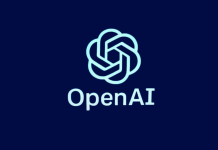Table of Contents
Imagine if a continent decided it would no longer be dependent on foreign smartphones or software, but would build its own tech from scratch. That’s what Europe is trying to do with artificial intelligence (AI). For many years, the U.S. and China have led the world in AI development. But now Europe wants to chart its own course — not just follow or depend on others.
So, Europe is stepping up: investing in homegrown AI, building laws to govern AI use, and creating infrastructure to reduce reliance on foreign tech companies. In this blog, I’ll explain:
- Why Europe wants AI independence
- What new plans and tools is it rolling out
- How this affects tech, business, and everyday people
- What challenges does Europe face ahead?
1. Why Europe Wants AI Independence
a) Too Much dependence
Many European countries currently rely on AI tools, hardware, and services from U.S. and Chinese companies. That means if those companies pull back or change their terms, Europe could be left vulnerable.
b) Security, privacy, sovereignty
Running AI systems means handling a lot of data. Europe wants to protect its citizens’ privacy, ensure data stays secure, and have legal control over how AI is used — especially in critical sectors like healthcare, energy, and defense.
c) Global competitiveness
AI is the engine powering future tech—self-driving cars, robots, advanced medicine, and climate models. If Europe can’t compete, it could lose its influence in the next wave of global innovation.
d) Ethics & trust
Europe often leads with values: human rights, protection of citizens, and regulation. Europe believes that ethical AI — safe, fair, transparent — is essential. It doesn’t want to cede those values to external players less concerned about them.
2. What Europe Is Doing: New Plans & Tools
Europe isn’t just talking — it’s putting dollars, laws, and structure behind its AI sovereignty ambitions. Here are some of the key new moves.
a) “Apply AI” & AI Continent Action Plan
The European Commission has launched ambitious strategies, such as applying AI to invest in AI deployment across industries to reduce dependence.
They aim to accelerate AI use in sectors like healthcare, energy, manufacturing, defense, and more.
b) €1.1 billion investment
Europe has set aside about €1.1 billion to boost AI in key industries. This will help fund projects, research, infrastructure, and help smaller firms adopt AI.
c) Building AI infrastructure & “gigafactories”
To support powerful AI training and models, Europe plans to build large computing centers (often called “AI factories” or “gigafactories”) with massive numbers of AI processors.
These centers will reduce reliance on foreign data centers and chip suppliers.
d) Regulation & the EU AI Act
Europe already passed the AI Act (which came into force on 1 August 2024). It’s a risk-based law: AI systems with more potential harm must face stricter rules.
Europe also created a new European AI Office to oversee regulation for general-purpose AI and enforce compliance.
e) EuroStack & digital sovereignty efforts
In parallel, thinkers and policy groups are pushing for EuroStack — a vision for Europe’s own digital infrastructure stack (operating systems, platforms, standards) to reduce dependence on foreign tech.
This includes hardware, software, networking, cloud—everything that keeps the continent running without outside control.
3. What New Features / Policies Europe Is Introducing
Here are some of the newer features or policy tools Europe is using as part of the independence push:
- AI in critical sectors: Europe is specifically targeting sectors like healthcare, manufacturing, climate science, defense, and energy to adopt AI locally.
- Agentic AI in science & manufacturing: Tools that can take initiatives or suggestions (not just following commands) will be deployed in research and industry.
- AI screening / advanced diagnostics: Using AI to screen medical images, detect diseases, or assist health care systems as a European solution rather than relying on foreign tools.
- Support for startups & regulation easing: To help Europe’s AI entrepreneurs, the plan includes measures to reduce regulatory burdens and costs for startups that comply with rules.
- Enforcement & oversight by EU AI Office: Especially for general-purpose AI, the European AI Office ensures compliance, audits, and penalties for violations.
4. What This Means: Possible Impacts
a) More European AI startups
With funding, infrastructure, and favorable policies, more European companies could compete globally rather than being acquired by bigger foreign firms.
b) Reduced dependency on US / China tech stacks
When Europe builds its own AI compute, data centers, and tools, it will rely less on U.S. or Chinese cloud providers, chip makers, or software platforms.
c) Stronger data protection & trust
Europe can better ensure that AI respects privacy, transparency, fairness, and human rights. Citizens may feel safer using AI services built under European law.
d) Regulation may discourage risky AI
Because of strict laws, Europe may avoid unsafe or harmful AI systems. That could make Europe a safer space for AI deployment, but also slower in risk-taking areas.
e) Potential fragmentation or slower pace
Because Europe is coordinating many countries, progress may be slower than in more centralized nations. Also, strict rules might discourage innovation or lure talent away.
5. Challenges & Risks Ahead
- Balancing regulation and innovation: Too much regulation may stifle innovation. Over-strict rules could push AI talent to more permissive regions.
- Capital & scale: Building large AI factories and infrastructure is expensive. Europe needs vast capital investment.
- Talent competition: AI experts are in demand globally. Europe must attract and retain talent amid competition from the U.S. and China.
- Technology leaps: AI models and architectures evolve fast. Europe must ensure its infrastructure keeps up.
- Coordination across countries: The EU is many nations with different priorities, languages, and budgets. Coordinating efforts is complex.
Conclusion
Europe’s push for AI independence is an ambitious, long-term gamble—but possibly a vital one. By building its own infrastructure, regulating wisely, funding innovation, and fostering sovereignty, Europe is trying to reclaim its place in the AI future. The path won’t be easy, but if Europe gets this right, it could lead the world not just in technology, but in ethical, trustworthy, sovereign AI.

































